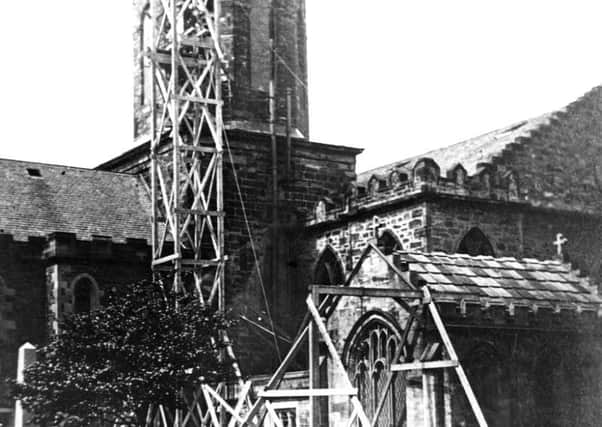Let those church bells continue to ring out


In these high tech days it is interesting to think that this ancient method of communication is still part of our lives and that our forefathers once heard and responded to those same sounds.
The restoration of the steeple means that once again the great bell cast by Thomas Mears at London’s Whitechapel foundry is doing the job for which the town paid the princely sum of £120 in 1815.
Advertisement
Hide AdAdvertisement
Hide AdIt replaced the faithful old bell of 1697 made by John Meikle of Edinburgh which is now in the museum.
The earliest surviving bell in the town is probably the simple little handbell belonging to Falkirk Trinity. According to some experts this dates to before the Reformation and might have been used as a ‘deid bell’ at funerals.
Trinity is also home to what must be the most recent addition: The 13 bells cast in Baltimore and gifted to the church by Robert Dollar in 1926.
Larbert Old has another early handbell bearing the inscription ‘Lerbeirt 1669’ which tradition says used to hang on a tree before the church was built in 1820.
Advertisement
Hide AdAdvertisement
Hide AdThis seems a bit unlikely though we do know that Bothkennar did employ a similar arrangement in 1789 while their bell tower was under construction.
This story was told by the Rev. William Maclaren who described how a new bell for Bothkennar was paid for by members of the congregation who thereby obtained the right to have the bell rung at their funerals and those of their families for all time coming . No pay, no play!
Almost every church in our area had a bell, sometimes more than one, and there were a huge number of new buildings opened especially in the late Victorian era.
Sometimes old bells were melted down and reused and occasionally they were gifted to other congregations. Others were preserved and few ended up in the museum like one from Polmont Old and another from the former West Church in Grangemouth. Of the new ones there are just too many to mention but one or two things are worthy of special mention.
Advertisement
Hide AdAdvertisement
Hide AdThe Gorbals foundry of John C Wilson was especially busy in our area with bells cast for Brightons (1857), Grahamston (1875), Laurieston (1876), Grangemouth (1881), Stenhouse and Carron (1899) and Erskine (1905) among others. One departure from this near monopoly is St Andrew’s where the bell installed in Newmarket Street in 1895 was cast by John Murphy in Dublin and is decorated with shamrocks!
The Kirk of the Holy Rood which opened in 1963 has the bell that once summoned the Queen to Crathie Kirk at Balmoral before it was repaired and re-homed in Grangemouth.
In Camelon the 1839 bell in what would later become St John’s was gifted by the Union Canal company managers who had used it to call the workers to their labours while the railway viaduct was under construction. A reminder that industrial companies often used bells for this purpose, most famously the one that hung on the ‘triangle’ at Carron Iron Works.
Back in 1815 the new steeple bell was given an inscription which says: ‘May Falkirk Flourish’. A reminder if we needed one that our hopes for this community are no different from those who first heard it ring out 200 years ago.